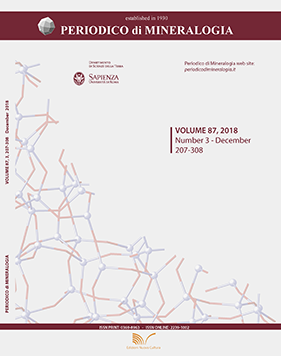Microbial kaolinization of granite stones within the tomb of the King Oserkon II, Tanis, Lower Egypt
DOI:
https://doi.org/10.2451/2018PM709Keywords:
Candida lipolytica, Lower Egypt, Kaolinization, The King Oserkon II, quartz.Abstract
Ochre granite stones in the tomb of the king Psusennes I at Tanis, Lower Egypt, were subjected to continuous kaolinization by microbiota composed of Pseudomonas aeruginosa, Streptomyces spp. and Yarrowia lipolytica (Candida). These microorganisms involved significantly in kaolinization of granite into clay minerals that turned rosy color of granite into grey color of clay minerals due to their acidolytic activity. Grey film on the colonized granite contained a higher ratio of Ca ions and lower ratio of Fe ions. On the other hand, quartz appeared in form of separated crystals that caused roughing of granite surfaces in the investigated tomb.


